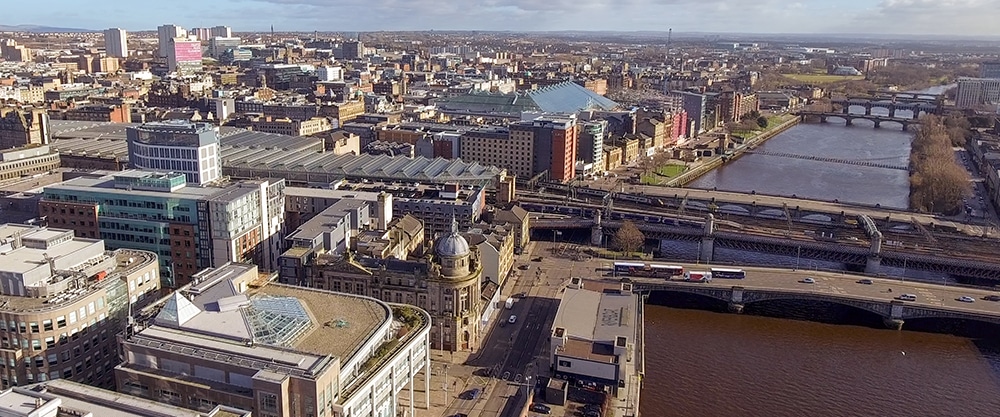Innovative approaches to residential design and the provision of residential amenities has never been more important as we face the challenge of repurposing vacant floorspace and delivering new developments on increasingly tight urban plots.
The role of the planning system in delivering benefits through city centre living
In 2019, Glasgow was named the ‘best UK city for millennials’ – in light of work opportunities, cost of living, property prices and availability of things to do. Despite this, the city centre itself offers limited residential accommodation. Meanwhile, other UK cities, such as Manchester, have successfully attracted high density residential development into the heart of the city.
This summer, Glasgow City Council approved their City Centre Living Strategy which aims to double the population of the city centre to 40,000 over the next 15 years. The strategy recognises that population density is crucial to the success and sustainability of city centres.
For cities across the UK, having a significant city centre population has economic benefits – by attracting people to live and stay in the city and to spend money there; environmental benefits by reducing reliance on motorised transport to reach places of work and leisure opportunities; and social benefits – by creating communities and a sense of liveliness throughout the day.
Despite the benefits of city centre living being accepted, the planning system does not always present an open door for developers looking to obtain planning permission.
Whether it’s an historic building being offered a new lease of life, a former retail space being re-purposed, a co-living development or build to rent block, careful consideration of design issues, transport matters, the relationship with surrounding land uses, townscape impacts, access to amenity space, infrastructure requirements – the list goes on – is required.
The nature of city centre development sites means boundaries often need to be pushed in terms of scale, density and design in order to deliver homes which excite and meet the needs of future residents. At the same time, developments must be cognisant of their surroundings, and economically viable. Residents demand the benefits of living in a dense urban environment without compromising on amenity space, daylight and a quiet night’s sleep at the end of the day.
The planning system has an important role to play in facilitating homes which meet these demands. Planning success requires a clear vision, expert advice to navigate technical matters and a collaborative approach between local authorities and developers. Innovative approaches to residential design and the provision of residential amenities has never been more important as we face the challenge of repurposing vacant floorspace and delivering new developments on increasingly tight urban plots.
Despite the challenges to be navigated, delivering city centre accommodation of all scales is important for our economy, environment and community. Some UK cities have been at the forefront of delivering high quality homes whereas others are behind the curve. The benefits for the wider city of facilitating new homes in our centres should be viewed as a common goal to work towards. Innovative design solutions, along with a willingness to push boundaries, will be key to delivering successful city centre homes.

